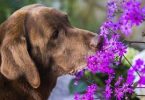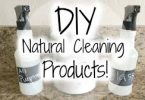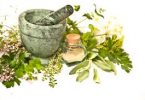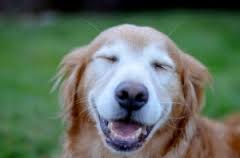
As our canine companions begin to age, their joints get rusty and their less quick to hear your call. They get a little stockier around the middle-despite taking in the exact same amount of daily food they ate when they were younger. They are slower in their get along, and don’t see as well as they once did. We can’t deny these age related changes.
Nothing can prevent aging, but you can prevent some of the problems associated with it. The use of tonic herbs help support the functions of different organs, which, in turn, improves the overall health of the body. Our favorite tonic herbs for the aging dog include:
 Dandelion, which enhances liver function and is a diuretic
Dandelion, which enhances liver function and is a diuretic
 Echinacea, a general immune system balancer
Echinacea, a general immune system balancer
 Ginger, which boosts a lethargic digestive system
Ginger, which boosts a lethargic digestive system
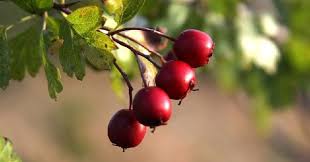 Hawthorn, a cardiotonic that helps the aging heart
Hawthorn, a cardiotonic that helps the aging heart
 Milk Thistle, a liver function enhancer
Milk Thistle, a liver function enhancer
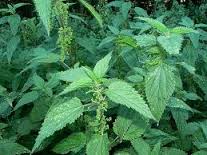 Nettle, a gentle whole body tonic
Nettle, a gentle whole body tonic
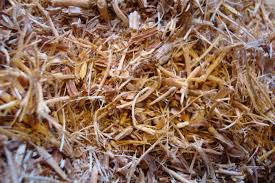 Sarsaparilla, a male rejuvenator and immune system enhancer
Sarsaparilla, a male rejuvenator and immune system enhancer
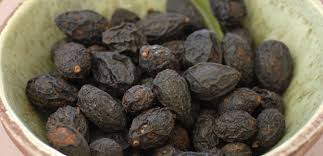 Saw Palmetto, a male rejuvenator that is especially good to help avoid prostatic hyperplasia (enlargement)
Saw Palmetto, a male rejuvenator that is especially good to help avoid prostatic hyperplasia (enlargement)
Evaluating Aging Organ Systems
It is recommended to have a annual exam for healthy geriatric dogs, starting soon after they have passed their seventh or eighth birthday. Along with a regular physical exam, they should have a complete blood count, CBC, a urinalysis, a series of blood chemistries , and possibly X-rays. These exams are a way to screen for organ related problems, catching these problems early, at a time when you can actually do something about them, is very important. The annual exam is the perfect way to identify organ systems that can be helped with herbs.
Get Adequate Exercise
Use it or lose it! Your dog should go on daily walks, at least 4 times per week. Chasing a ball is good for a daily muscle building routine.
Incorporate Antioxidants
As we age, our cells are producing more and more free radicals-chemicals that speed the aging process.One of the keys to antiaging is to counter this overproduction of free radicals with antioxidants. Vitamins C and A are good antioxidants, but so are many herbs. Some of the culinary herbs even have antioxidant activity such as basil, oregano and thyme.
Longevity Herbs
In addition to the above regime, you can gradually add herbs that can enhance the length and quality of their life during the golden years.
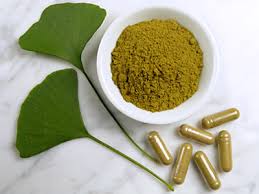 Ginko Biloba
Ginko Biloba
Ginko is a primary anti aging herb. It acts on two major systems of the body.
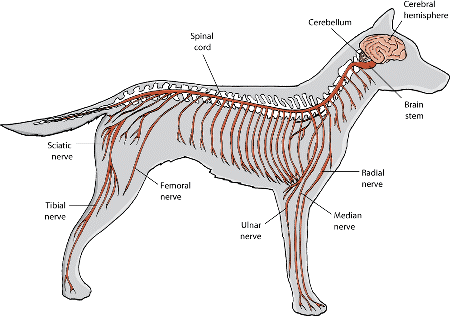
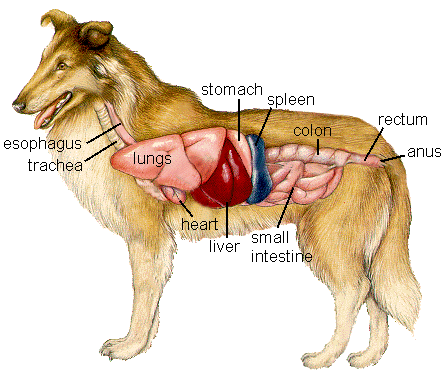 The nervous system and the cardiovascular system. Ginko has been proven effective in treating Alzheimer’s disease, depression and senile dementia. In animals, senile dementia associated with Alzheimer’s like symptoms is referred to as cognitive dysfunction or dimming mind syndrome. Ginko enhances both long term and short term memory in puppies and older dogs alike. This herb improves circulation and has good antioxidant activity. Studies also indicate that Ginko is often effective for treating age related hearing and vision loss, dizziness and vertigo, and tinnitus (ringing in the ear.
The nervous system and the cardiovascular system. Ginko has been proven effective in treating Alzheimer’s disease, depression and senile dementia. In animals, senile dementia associated with Alzheimer’s like symptoms is referred to as cognitive dysfunction or dimming mind syndrome. Ginko enhances both long term and short term memory in puppies and older dogs alike. This herb improves circulation and has good antioxidant activity. Studies also indicate that Ginko is often effective for treating age related hearing and vision loss, dizziness and vertigo, and tinnitus (ringing in the ear.
 Rosemary
Rosemary
Rosemary contains ingredients that help prevent the breakdown of the chemical acetylcholine in the brain. A deficiency in acetylcholine is a contributing factor in senility in general and Alzheimer’s in particular. Rosemary is also an important antioxidant.
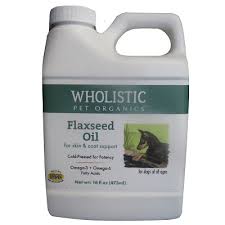 Flaxseed Oil
Flaxseed Oil
Flaxseed Oil is an excellent source of Omega 3 fatty acids, the good fats that reduce triglycerides and cholesterol (the prime fatty arterial blockers) and prevent blood clots.
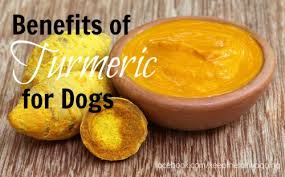 Turmeric
Turmeric
Turmeric is the yellow component of curry powder, and it stimulates the liver’s bile production. This herb is also a potent antioxidant. It is also heart healthy, acting as a blood thinner (which prevents clots) and helps to prevent excess cholesterol accumulation.
 Green Tea
Green Tea
The green variety of tea contains flavonoids and polyphenols, which are a type of flavonoid that may be a more powerful antioxidant than vitamins C and E.
 Gotu Kola
Gotu Kola
A traditional herb of both Chinese and Ayurvedic medicine, Gotu Kola has antioxidant activity that protects the body from damage by free radicals. The herb is useful for stress related disorders and memory problems.
How To Administer Herbs-The Delivery System

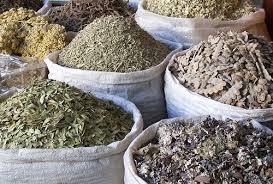
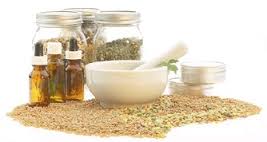 Some dogs take naturally to the herbs they need. For those individuals, using a tea or bulk herb on the food or in the water is the best dosing method.Other dogs are not herb lovers, and they will need a little coaxing. Capsules or tablets work well for stubborn dogs, if you can get the pills down, they can sometimes be very large. Tinctures, (especially the glycerin based, non alcoholic ones) are accepted by most pets, and a small dose, generally several drops, two or three times a day, in food or water, is all that’s needed. The tincture is my favorite method, however you have to be diligent to administer on a daily basis.
Some dogs take naturally to the herbs they need. For those individuals, using a tea or bulk herb on the food or in the water is the best dosing method.Other dogs are not herb lovers, and they will need a little coaxing. Capsules or tablets work well for stubborn dogs, if you can get the pills down, they can sometimes be very large. Tinctures, (especially the glycerin based, non alcoholic ones) are accepted by most pets, and a small dose, generally several drops, two or three times a day, in food or water, is all that’s needed. The tincture is my favorite method, however you have to be diligent to administer on a daily basis.
The key is to use whatever herbal delivery method (bulk herbs, teas, tablets, capsules or tinctures) works most easily for both you and your dog.
Dosage and Potency
How much of the herb do you give and for how long? Trying to determine an herbs potency is nearly impossible. The most effective use of herbs is to activate and rejuvenate an organ system, or multiple organ systems, so look for herbs to help bring the whole animals body back into balance. How much herb it will take to activate that organ system depends on the herb and the individual animal. Each individual disease and animal will need a different amount of herbal content to return to normal health.
The easiest way to look at herbal dosages is to “give them to effect”. The basic rule is to start out slowly, with low doses at first. Then, after a month or so, when the dog adjusts to their herbal intake, taper off or add on, depending on the dog’s reaction. So, listed below are suggestions and strategies for combining herbs in different ways, depending on what is most acceptable to your dog.
First, a few rules of thumb:
- Expect slow and easy results. Herbs often need to be given for at least 30 days before you”ll see appreciable results. Look for mild and subtle, long lasting changes.
- Use the delivery system that works best and most easily for your dog. It is important to get the herbs into the dog’s system than it is to worry about the proper way to dose.
- Start out slowly and then, depending on the dog’s reaction, taper off or add on. Often, very small amounts of herb are enough to activate organ systems, ultimately leading to the cure you want.
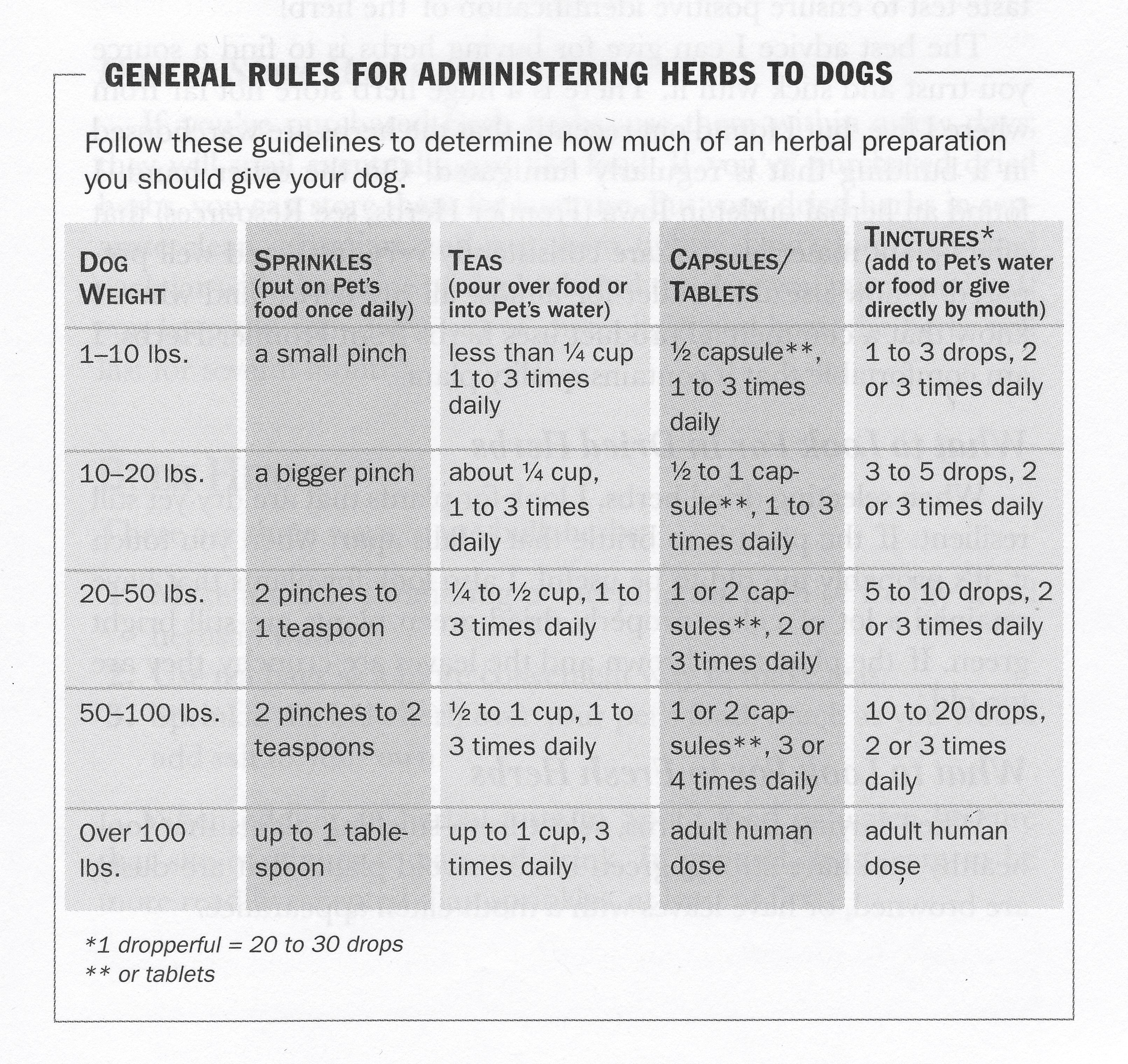
Selecting Herbs
The best herbs to buy are top quality, whole herbs. They should be organically grown, with no pesticides or herbicides, which can interfere with the healing properties of the plants.
A good herbal wholesale outlet has numerous levels of quality control to ensure that the plants sold are of the highest potency. Find a source you trust and stick with them. There is an herbal outlet located in Iowa called Frontier Herbs. Their herbs are consistently fresh and well prepared.
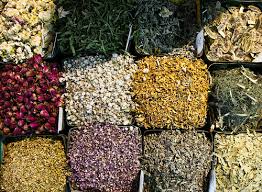 What To Look for In Dried Herbs
What To Look for In Dried Herbs
When selecting dry herbs, look for plants that are dry yet still resilient. If the plant is so brittle that it falls apart when you touch it, it’s probably too old to be useful. Look for plants with lots of color. If the plants are brown and the leaves are crunchy, they are too old.
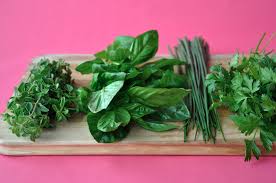 What to Look For in Fresh Herbs
What to Look For in Fresh Herbs
Select fresh smelling plants that look healthy and have strong, green leaves. Avoid plants that are dusty, are browned, or have leaves with a moth eaten appearance.
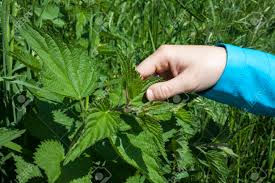 Gathering Wild Herbs
Gathering Wild Herbs
Accurate identification is critical for obvious reasons. Most of these herbs are easy to identify, but if you are unfamiliar with a herb, you should have an expert confirm your identification. Be careful about harvesting herbs in urban and suburban environments, which most likely have been treated with pesticides and herbicides. Even plants within a certain distance, some say 300 feet, from rural roads are not safe. Roadside plants, as well as herbs that grow near railroads and under high voltage power lines , are typically sprayed with potent chemicals. Do not use an herb unless you are absolutely positive that it has not been sprayed.
 How To Store Herbs
How To Store Herbs
If you are using fresh herbs, use them within a few days, they will eventually spoil, like food. Dried herbs can be stored and used in the future. Put them in clean, separate glass jars and cap them tightly. Label each jar with the name of the herb and the date you purchased it. If you keep the containers out of direct light and heat, the herbs will last for several months.
Bulk Herbs
There are 3 ways to use bulk herbs.
1.) Make a tea by simmering or steeping the fresh or freshly dried herbs in water
2.) Use tea bags as a more convenient way to make teas
3.) Sprinkle bulk herbs over your pets food as would you put salt on your own.
When adding an herbal taste to your dog’s food or water, be sure that they continue to eat and drink. In general, teas seem to be more readily accepted than sprinkles, at least at first.
 Using Sprinkles
Using Sprinkles
Many, but not all, dogs enjoy the taste of herbs. Sprinkles can be made of fresh or dried herbs, and are best cut or ground into small pieces. Try the sprinkles on a small portion of your dog’s food and see whether he selects or avoids that portion of the serving. I place the sprinkles in a glass jar with holes in the top, like a romano cheese shaker. Evidence suggests that it is important for the animal to taste the herb , evidently triggering other body systems to actively accept the herbs healing properties. This is called the “oral activating factor”.
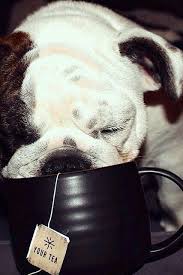 Using Teas
Using Teas
After brewing tea with fresh or dried herbs and then cooling the liquid, pour a small quantity onto your dog’s food or into his water several times a day. Just boil some water, pour it over the plant stuff, and let it sit in a covered teapot until it has steeped for however much time you have available.
Basic Herbal Tea Recipe
8 tablespoons fresh herb or 4 teaspoons freshly dried bulk herb or 2 herbal tea bags
1 quart boiling water
1.) Simmer or steep the fresh or freshly dried bulk herbs or tea bags for 10 to 20 minutes. Strain out the herb material and allow the liquid to cool.
2.) Pour 1/4 cup or so of tea over your dog’s food two or three times per day, or add small amounts to his water.
3.) Store excess tea in the refrigerator to use over the next few days.
Tinctures
These preparations are made by soaking the fresh or freshly dried herb in a solvent. In general, tinctures are considered more medically effective than capsules or tablets.
There are two major solvents, alcohol and glycerin. For most herbs, alcohol is the best solvent because it extracts more of the plants active ingredients. Alcohol, however can be toxic in some patients, causing gastrointestinal irritation and allergic reactions. Non alcoholic tinctures are typically extracted in glycerin, a sweet tasting solvent that masks the taste of bitter herbs. Glycerin can be found in most health food stores, but is not quite as efficient as alcohol in extracting plant constituents, but is a good alternative.
All you need to make a tincture is a clean jar with a tight fitting lid, as much herb as it will take to fill the jar and either alcohol or glycerin to cover the herbs. For a tincture that will be stored and used for a couple of years, choose a substance that is 40% alcohol. Gin works fine, as does brandy. Some people use Everclear, a powerful alcohol, but the stronger the alcohol, the worse it will taste. A mild 20% alcohol may be used, but the tincture won’t last as long.
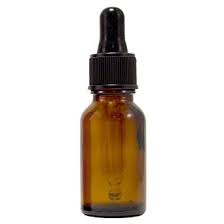 Administering Tinctures
Administering Tinctures
Tinctures can be used on your dog’s food or in small amounts in his water. Or, you can use an eyedropper and squirt a few drops in his mouth or into the fold at the crease of his lips. Whenever possible, use the non alcoholic tinctures. A few drops between the lower lip and gums at the side of the mouth two or three times daily, plus a few more drops in his water dish or on top of food, are often more than enough to be effective. Pet, praise and feed him a little treat afterward so that he will associate positive experiences with the administration of the tincture.
Simple Tincture
Fresh or dried herb of choice
Solvent of choice
1.) Stuff a clean glass jar with the herb, leave an inch or two of space at the top. Fill the jar the rest of the way with the solvent.
2.) Close the jar tightly and put it in a dark cupboard for a week or two. If the liquid is not very discolored with essences from the herb, let it soak a week or two longer. Shake the jar every few days.
3.) Strain the plant material out of the liquid. Muslin or cheesecloth works best to capture all the little plant particles, and you can also use the cloth to squeeze as much liquid as possible from the plants. Re-bottle the liquid and discard the plant material. I use dark colored bottles with eyedroppers. Label the bottle with the date and the plant and the solvent used. Alcohol tinctures can be kept a long time in a cupboard, glycerin tinctures will keep longer in the refrigerator. Do not expose the tincture to light or heat.


Capsules and Tablets
There are two basic ways to make capsules and tablets.
1.) Pack the powdered form of the herb into a capsule.
2.) Use a tincture of the herb and soak it in the stuff that will make up the pill, powdered fillers and binders. Let the fluid portion of the tincture evaporate. What remains is a pill-tablet with the non-fluid portion of the tincture dissolved into the powdered components. Fillers are usually made of soy or millet powder. Binding agents include magnesium stearate and dicalcium phosphate, which may contain lead.
Capsules and tablets are inexpensive and if your dog will take them, they are convenient to give. If it is a product made for animals, read the label. If it is a made for human product, read the label and adapt the dosage to your dog’s size.
Topical Herbal Applications
There are hundreds of topical herbal medicines on the market-oils, ointments, salves, soaps, and so forth. Skin is an animals largest body organ, and it readily absorbs all sorts of healing agents. Topical use of herbs can be a highly effective delivery system for herbal healing.
You need to be a bit careful when using topicals, some of the carrying agents may be irritating to your pets skin. Also, dog’s will almost certainly lick off anything that is applied to their skin, and some of the carrying agents can cause intestinal upset.
How To Choose Topicals
Natural based oils and salves-such as beeswax, lanolin, coconut, olive, almond, grapeseed and jojoba oils -are best and cause the fewest reactions. Petroleum based and coal tar based products seem to cause more reactions, and if the product label contains something you can’t pronounce, don’t use it. If your dog is sensitive to anything, use a test dose. A small amount applied to one area of your dogs skin-and watch for 4 to 6 hours for signs of adverse reactions.
 Making Your Own Topicals
Making Your Own Topicals
A favorite topical application for wounds and other small areas is an herbal spritz. To give your dog a spritz, make the appropriate herb into a tea, allow it to cool, then spray it on the area directly. Use this treatment 3-5 times per day. The spritzed herb will dry quickly, giving your dog little opportunity to lick. And even if he does lick, they only ingest the healing herb. Because the herbs are absorbed so readily through the skin, a daily romp and roll in your herbal garden is one of the best ways to apply the herb.
Adapting Human Products for Use on Dogs
If you purchase a product meant for humans, read the label and adapt the directions to your dog’s size. Assume your dog weighs 150 pounds. Here are some examples of how that would work.
Tinctures-The label instructions on the human product are to give 20 to 30 drops, three or four times per day, for a total daily human dose of 60 to 120 drops. Your dog weighs 15 pounds. 15=1/10 of 150 pounds, so the dog should receive 6-12 drops daily, preferably divided into three or four doses. A three times daily dosage would be 2-4 drops.
Capsules or Tablets
The label instructions for humans are to give 3 to 5 capsules, three times a day. If your dog weighs 30 pounds – 30 pounds=1/5 of the normal 150 pound human. You could give up to one capsule or tablet 3 times per day. But if your dog weighs only 15 pounds, you could break the tablet in two and use the half capsule/tablet dosage 3 times per day.
Teas
Add about 1/4 cup to your dog’s food two to three times per day.
Randy Kidd D.V.M/Ph.D

